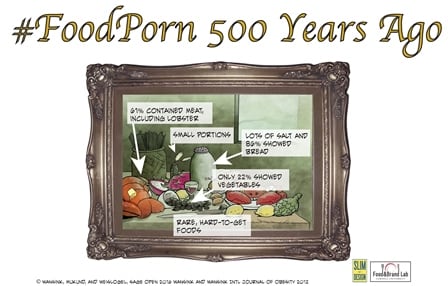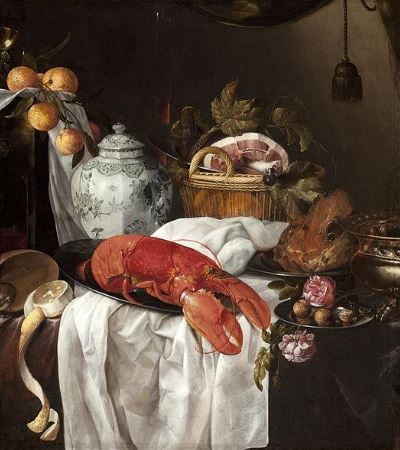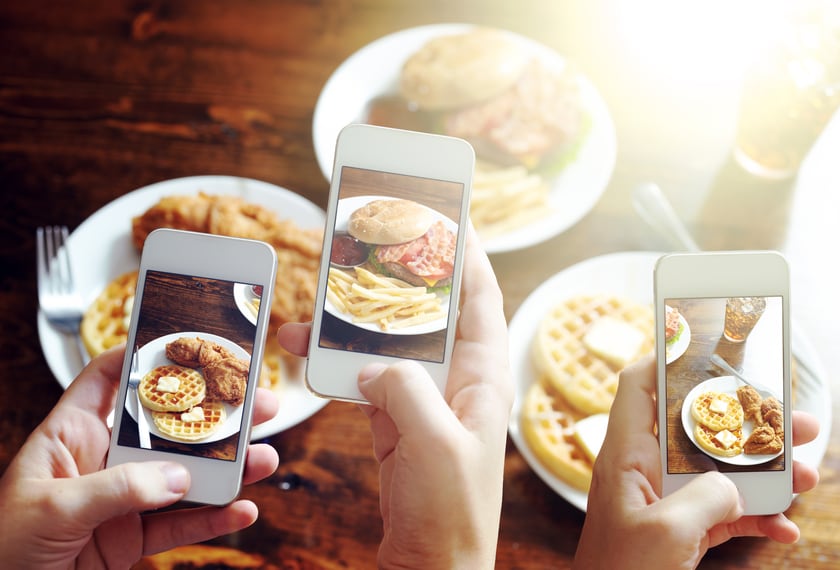The researchers from the Cornell Food and Brand Lab selected 750 Western paintings depicting food from five countries and spanning 500 years. They whittled this down to 140 paintings that showed small, ‘family-sized’ meals rather than banquets, the researchers indexed 104 different food types and found that people’s preference for seeing pictures of indulgent foods is nothing new.
Aspirational art (and food)

The most commonly painted meat was shellfish - usually lobster - while the most commonly painted vegetable was artichoke and lemon came out top for fruit.

Director of the Cornell Food and Brand Lab and lead author Brian Wansink said: "Crazy meals involving less-than-healthy foods aren't a modern craving. Paintings from what's sometimes called the Renaissance Period were loaded with the foods modern diets warn us about - salt, sausages, bread and more bread."
The authors of the study, published in the journal Sage Open, write: “One surprising generalization about the depiction frequency of foods is that frequently depicted foods are not frequently eaten foods. The bias of either the artists or the patrons seems to have been in the direction of painting either special or aspirational foods, or aesthetically pleasing foods.”
Digital grazers
But while the the sheer proliferation with which 'digital food grazing' occurs today, coupled with our easy access to high energy dense foods, means the reality-reflects-art effect is much greater than before. The potential effects on public health are also greater.

Researchers from the Crossmodal Research Laboratory at Oxford University, headed by Professor Charles Spence, published a review in Brain and Cognition warning how the rise of visual depictions of food that surround us through adverts and social media could be fuelling obesity as photographs of food act as visual cues that stimulate our appetite.
However, Spence and his team of researchers did argue that the phenomenon could be put to good effect if used in a responsible way, by encouraging young children to eat more fruit and vegetables by exposing them to more picture of these healthy foods, for instance.
The perfect backlash
Other experts are warning of a different backlash to the food porn craze.
Self-proclaimed ‘food futurologist’ and director of London-based Bellwether Food Trends, Dr Morgaine Gaye, predicts that we will become saturated by images of picture perfect food and will start to crave food that is more authentic through its imperfection.

“The growth of authentic will be supported by the coming of age of ‘Generation Me’ – otherwise known as the ‘Millennials’. Having acquired their knowledge of food through third parties, rather than at home, and brought up on a diet of perfect ‘Instagrammed’ dishes, they will shift to a preference for more casual and less ‘picture perfect’ foods,” she wrote in a report by ingredients supplier Ingredion on the future of food.
“This will result in a nostalgia for real home-cooking that tastes great, but looks genuinely homemade which means real and authentic.”
Source: Sage Open
Published online 19 July 2016 DOI: 10.1177/2158244016654950
"Food Art Does Not Reflect Reality: A Quantitative Content Analysis of Meals in Popular Paintings"
Authors: Brian Wansink, Anupama Mukund and Andrew Weislogel
